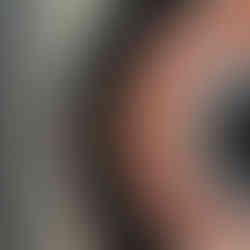Sustainable Conundrums: Material Choices
- reptilicus
- Mar 26
- 3 min read
Updated: Apr 15
conundrum /kəˈnʌndrəm/ noun a confusing and difficult problem or question.
The overarching narrative for my designs is sustainability. I am discovering this is not always as easy as I thought. I often find myself asking myself the question...is this a sustainable fabric/material, should I only be using repurposed fabrics, items?
I have been working on designing some cushion covers, to broaden my product range, price and demographic. Not everyone can afford a £100 shirt, despite their unique/one-off design and careful attention to detail. Cushions are found in every home and come in different sizes, fabrics and styles. So far all the fabrics I have used to create my range of shirts, have strictly come from secondhand shirts. Cushions, although, not worn, are usually made from more substantial fabrics. Medium weight cottons, linens, silks and furnishing fabrics. For this reason, I wanted to introduce denim as the main base fabric on which to add my applique shapes.

The aim was to source jeans from charity shops, but I found it difficult to source non-stretch denim. The majority of jeans had elastane fibre (Elastane, also known as spandex or Lycra, is a synthetic fiber invented in the late 1950's by DuPont chemist, Joseph Shivers, as replacement for rubber, offering superior stretch and durability).

I found sewing this onto another fabric created puckers, which looked unprofessional and ugly. This is where the title of this article comes into play. Should I buy a brand new fabric? Doing so would put into question, how sustainable will my cushions be? Denim, for me, was my preferred fabric of choice. Strong and durable and ages attractively. I did not want to compromise the quality and visual aesthetic of my cushions.
However, denim, in particular jeans, worn worldwide and found at every level of the fashion industry is notorious for the resources it uses, during it's production, in particular, water usage.

Making jeans requires large amounts of resources, such as pesticides, water, and energy, and the way they’re designed and constructed makes them difficult to remake and recycle after use.
"...cotton cultivation and wet textile processes like bleaching, dyeing, printing, and finishing, and global production of cotton is estimated to use 222 billion m³/y of water. It is also estimated that 20% of industrial water pollution is associated with garment manufacturing, and 85% of that is associated with an annual 1.3 trillion gallons for dyeing processes." (1)
I found the answer in a local fabric shop called, Ditto Fabrics, Kensington Gardens, in Brighton's North Laines. It's stock of fabrics, far exceeding in quality, compared to other fabric shops in the city. Reasonably priced. The place to explore if you're looking for interesting and unusual fabric. Some sourced from Italy and sometimes from designer label stock. I discovered a denim fabric that was woven from 80% recycled cotton and 20% recycled polyester. Textile waste from the fashion and textiles industry. I felt this was an answer to my sustainable conundrum. Recycled denim is a more sustainable choice because it reduces the waste produced by the fashion and textile industry, thus lowering their carbon footprint. Whilst there are challenges associated with producing recycled denim, and yes, one could argue it was a "new" fabric, however, far less water would have been used in it's production. I am sure some people reading this article, will have their opinion /argument on this. I take seriously how I design and produce my products and try to be as transparent as I can, where sustainability is concerned.
Hybrid Styles cushions continue the theme of sustainability, featuring the iconic applique circles. Made from, sustainable denim, repurposed fabrics and a brand label that is made from recycled plastic.
Cushions are 20" x 20" (51cms x 51cms), retailing at £40.00
Further reading: The Jeans Redesign, Ellen McArthurFoundation, https://www.ellenmacarthurfoundation.org/the-jeans-redesign/overview
Ditto Fabrics, https://www.dittofabrics.co.uk/
(1). Fluence, The Water Footprint of the Blue Jean, https://www.fluencecorp.com/blue-jeans-water-footprint/




















Comments